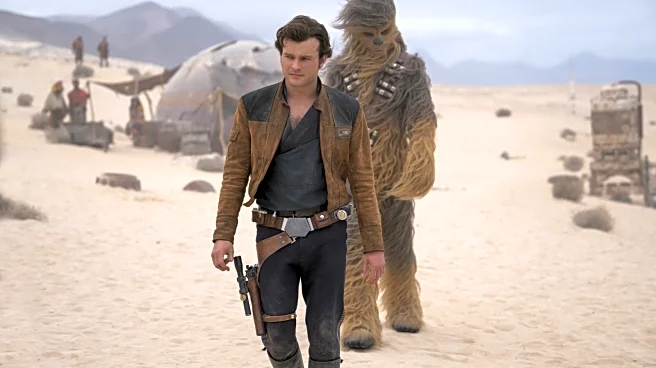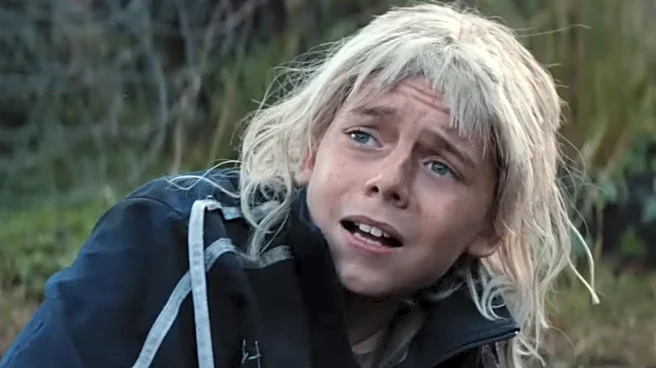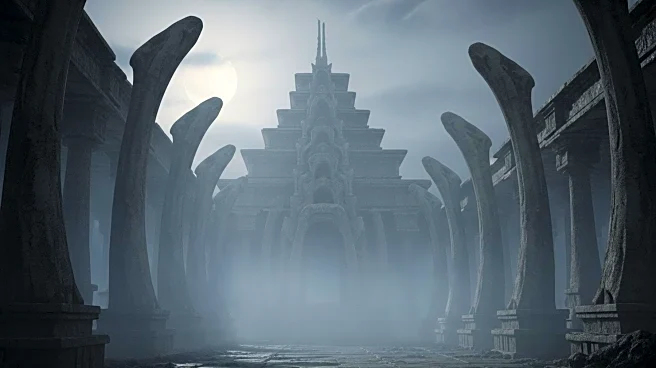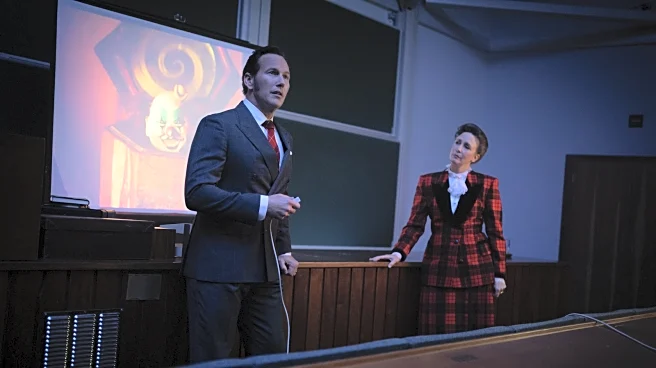What is the story about?
What's Happening?
Director Nia DaCosta has unveiled details about the upcoming sequel, '28 Years Later: The Bone Temple,' set to release on January 16, 2026. The film follows Spike, played by Alfie Williams, as he navigates between two conflicting worlds: the violent gang led by Jimmy, portrayed by Jack O’Connell, and the more structured environment of Dr. Kelson, played by Ralph Fiennes. The sequel promises to expand the universe established in the previous film, exploring the effects of the 28-years-later phenomenon. DaCosta emphasized the unique filming styles used to depict the contrasting worlds Spike encounters, adding depth to the narrative. The film also continues the storyline of Samson, the Alpha zombie from the last installment, further enriching the plot.
Why It's Important?
The release of '28 Years Later: The Bone Temple' is significant for fans of the franchise, as it continues to build on the narrative established in the previous films. The sequel's exploration of different societal structures and the impact of the 28-years-later effect offers a fresh perspective on the post-apocalyptic genre. This film could influence future storytelling in similar genres, encouraging filmmakers to delve deeper into character development and world-building. Additionally, the film's quick turnaround from its predecessor highlights the efficiency and dedication of the production team, potentially setting a precedent for future sequels in the industry.
What's Next?
With the film's release scheduled for January 16, 2026, audiences can expect promotional activities and trailers to build anticipation. The film's unique narrative and character dynamics may spark discussions among fans and critics, potentially influencing future projects within the franchise. The exploration of societal themes could also lead to broader conversations about human nature and survival in extreme conditions.
Beyond the Headlines
The film's narrative, which includes themes of nature's dominance and the complexity of human relationships, may prompt viewers to reflect on real-world issues such as environmental sustainability and societal structures. The portrayal of infected individuals as more than mere antagonists could challenge traditional perceptions of 'monsters' in cinema, encouraging audiences to consider the moral and ethical dimensions of survival.
AI Generated Content
Do you find this article useful?















